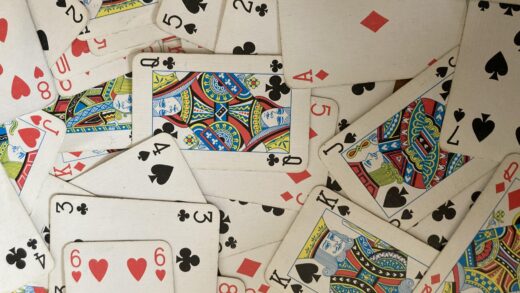Chinese Checkers Rules – Did you know that Chinese Checkers originally came from Germany? It’s a fun game that captures players with its cool looks and smart moves. The star-shaped board and colourful marbles make it interesting for people of all ages.
This short guide is here to help you understand the rules of Chinese Checkers better. We’ll talk about how to set up the game and some important strategies to play well. Whether you’re new to the game or have been playing for a while, let’s explore together why so many people love Chinese Checkers.
About Chinese Checkers
Chinese Checkers is a delightful board game from Germany featuring a star-shaped board and colourful marbles. The objective is to master Chinese Checkers rules as you strategically move your pieces to the opposite side, utilizing jumps and clever manoeuvres.
It’s an easy-to-learn game that is suitable for all ages, bringing people together for colourful and strategic fun! Whether you’re new or experienced, understanding Chinese Checkers rules adds an extra layer of enjoyment to this engaging pastime. So, gather your friends and family, set up the star-shaped board, and let the fun begin.
Setting Up the Game Board
In Chinese Checkers, the game board looks like a fancy star with six points. Each point is a triangle with ten holes (four on each side). Inside the star, there’s a hexagon with sides that have five holes each. The triangles come in different colours, and there are six sets of ten pegs, each with its own colour.
Getting Ready to Play
You can play Chinese Checkers with two, three, four, or six people. If there are six players, you use all the pegs and triangles. The game starts with pegs in two pairs of opposite triangles for four players. A two-player game also starts from opposite triangles. In a three-player game, pegs go in three evenly spaced triangles.
Each player picks a colour, and their ten pegs go in the triangle of that colour. Some rules say to leave unused triangles with pegs in them, but we suggest leaving them empty for an extra fun twist—peg hopping.
The Main Goal
The aim of Chinese Checkers is to be the first to move all ten pegs across the board and into the opposite triangle. The winner is the player who fills up all ten holes in their destination triangle before everyone else. So, pick your colour, set up the board, and enjoy a game of Chinese Checkers with your friends and family.
How to Play Chinese Checkers
- Starting the Game: Begin by tossing a coin to decide who goes first. It’s a fair way to start.
- Taking Turns: Players take turns moving their pegs. In one turn, you can either put your peg in a nearby hole or make it hop over other pegs.
- Hopping Moves: When hopping, your peg must jump over a nearby peg and land in the empty hole just beyond it. You can hop over any colour peg, even your own. You can hop in any of the six directions.
- Continuing Hops: After each hop, you choose whether to finish your turn or keep going by hopping over another peg. Sometimes, you might even move a peg all the way from one triangle to the opposite one in a single turn.
- Keeping Pegs on the Board: Pegs are always kept on the board; none are removed. Once a peg reaches the opposite triangle, it stays there and can only move within that triangle.
- Hopping Through Triangles: A question might arise about hopping into a triangle that’s your starting or another player’s target. While rules may vary, one suggestion is that you can hop through but can’t stay and rest your peg there.
Enjoy the game of Chinese Checkers, and may your strategic moves lead you to victory.
Chinese Checkers Rules
- Checker Movement: Each player must move one Checker during their turn. Passing turns is not allowed.
- The direction of Movement: Movement is always diagonal and occurs exclusively in black spaces.
- King’s Movement: Kings can move in both directions—forward and backwards. Single checkers can only move forward.
- Capturing Opponent’s Piece: To capture an opponent’s piece, a player must be adjacent to it. The spot immediately behind the opponent’s piece must be unoccupied.
- Jump Moves: Players must execute a jump move if available. Multi-jump moves are allowed, but players cannot jump off the board.
- Board Boundaries: Jumping off the board is strictly prohibited. Especially important when the opponent’s piece is positioned on the edge.
- Multiple Jump Options: Players can choose which Jump to undertake if there are multiple jump opportunities.
Remember, the ultimate goal is to have an enjoyable experience while strategically moving your checkers across the board in Chinese Checkers.
Chinese Checkers Variations
Tackling Challenges in Chinese Checkers
Sometimes, players face a tricky situation where they can’t win because an opponent’s peg is in the way. Surprisingly, many Chinese Checkers rules don’t talk about this issue, leaving players unsure about blocking opponents.
To make things fair, people have come up with different Chinese Checkers rules. One idea is that having an opponent’s peg in the way doesn’t stop a player from winning. The game is considered won when all the spaces in the destination triangle are filled.
Masters Games suggests another rule by James Masters in 2002 that helps in these situations: If a player can’t win because of an opponent’s peg, they can swap the opponent’s peg with one of their own. This applies whether it’s a normal move or part of a hopping sequence.
Playing with More Players
If you want a more challenging game, each player can handle two sets of pegs in a three-player match. Two players can control three sets of pegs for an even bigger challenge.
Super Chinese Checkers – Adding More Excitement
To make the game faster and more interesting, try a version called Super Chinese Checkers. Here, a piece can jump over another piece from any distance, landing the same distance beyond it in a straight line. Simply put, a piece can jump as far as it wants as long as it lands the same distance away. This advanced move goes beyond the regular ‘adjacent jump’ in the normal game, making the strategy even more fun.
Understanding Checkers Terms
- Capture (or Jump): This is when you hop over an opponent’s piece, and if there’s an empty spot right behind it, you remove their piece from the board.
- Double Jump: You can do more than one capture in a single move as long as there’s an empty spot behind the piece you’re jumping over.
- King/Promotion: When one of your pieces reaches the other end of the board, it becomes a king. Kings can move in any diagonal direction—forward or backwards.
- Long Jumping: Trying to jump over two pieces in a row is not allowed.
- Draw: If neither player can win, the game ends in a draw.
- Stalemate: In checkers, there’s no stalemate like in chess. If your opponent can’t make a move, you win.
- Single Checker (non-king): This refers to a piece that hasn’t become a king yet. These pieces can move diagonally forward one space at a time, except when jumping.
Chinese Checkers Winning Strategies
Getting Better at Checkers: Here are six simple strategies from the video above to help you win:
- Take control of the central eight pieces on the board.
- Swap pieces smartly, especially when you’re winning.
- Use forced jumps strategically to your advantage.
- Try to be the first to make one of your pieces a king.
- Don’t worry about being close to your opponent on the board.
- Create a strong line with your pieces for a better chance of winning.
Recommendation
How To Play Crazy 8: Rules, Tips, Variations & More
How To Win Mancala: Easy Guide To Master Mancala
How To Play Garbage Card Game AKA Trash Card Game
Wordfinderx: Your Secret Weapon for Word Puzzles
Is Mario Football 2024 Going to be The Next Game: Watch Mario Football 2024 Trailer
How To Play Bunco: A Step By Step Guide
How To Play 4 Corners Game: A Complete Guide
What Is Retro Bowl QB Mode And How To Play It?
How To Get Rid Of Ants In Virtual Families 3
Classroom 6x: The Ultimate Guide
Ransom Notes: The Ridiculous Word Magnet Game
Conclusion
In conclusion, Chinese Checkers, originating in Germany, has gained global popularity thanks to its intriguing star-shaped board and vibrant marbles. This guide has provided insights into Chinese Checker rules, making the game accessible and enjoyable for players of all ages. Whether you’re a newcomer or an experienced player, Chinese Checkers stands out as a delightful pastime that brings friends and family together for moments of strategic fun. So, as you set up the distinctive star-shaped board, choose your colour, and delve into the intricacies of Chinese Checker rules, embrace the journey of tactical moves and shared enjoyment that this unique game offers.
FAQs
Q: Can you jump 2 in Chinese Checkers?
A: A chess piece is not permitted to make successive jumps over two or more pieces in a straight line. However, it is allowed to perform a zig-zag jump, traversing over two or more pieces in an alternate pattern.
Q: Can you move backward in Chinese Checkers?
A: A game piece possesses the flexibility to move in either the forward or backward direction along any line, advancing to the next adjacent vacant point. If the adjacent point is already occupied, whether by one of the player’s own pieces or an opponent’s, and the subsequent hole is unoccupied, the player has the option to perform a jump over the obstructing piece. Importantly, the piece that is jumped over remains in its current position on the board.
Q: Can 5 play Chinese Checkers?
A: Chinese checkers accommodate a player range of 2 to 6 individuals.
Q: What is the best first move in Chinese checkers?
A: Strategic Opening Moves in Chinese Checkers: The sidewinder technique involves diagonally shifting one of the two marbles at the front row’s edge away from its present position. Conversely, the cross caterpillar move includes diagonally shifting one of those identical two marbles towards the board’s central line.
Q: Can you jump two pieces as a king in checkers?
A: In Chinese Checkers, Kings possess the unique ability to move unhindered in any direction and execute diagonal jumps over a single neighbouring piece at a time, spanning all four diagonal directions. Kings are not constrained to a solitary jump; they can carry out multiple consecutive jumps, intensifying the thrill of the game. It’s important to note that a game clock is implemented to maintain a time limit, adding an element of excitement to each match.
Q: Can you tie in Chinese Checkers?
A: In Chinese Checkers, tying is not a possible outcome. The game concludes when the first player successfully occupies all ten spots in their destination triangle. However, it’s worth noting that certain uncommon house rules may allow for the round to end after the initial player fills their destination triangle, introducing the chance of a draw.



